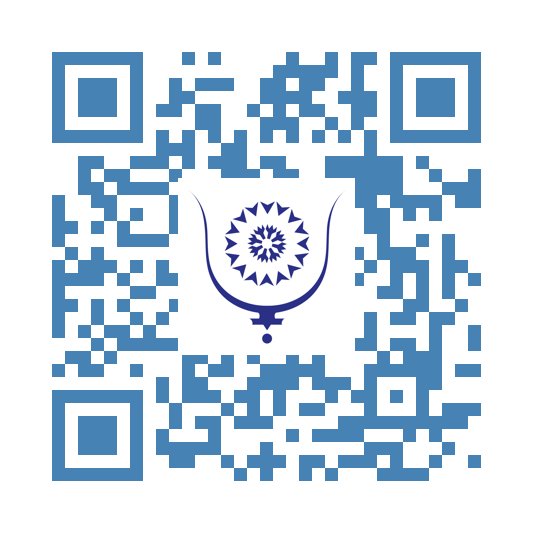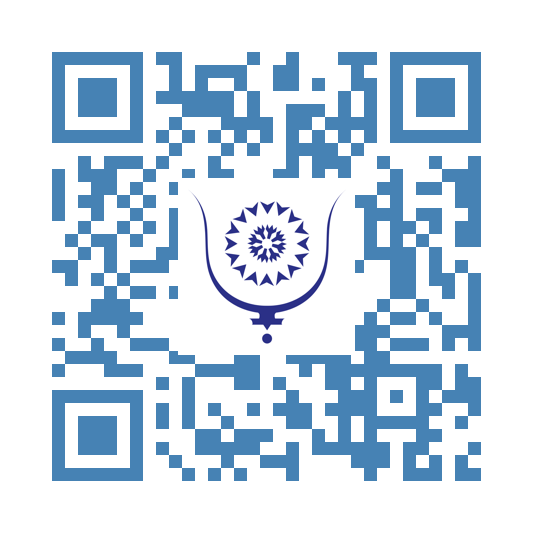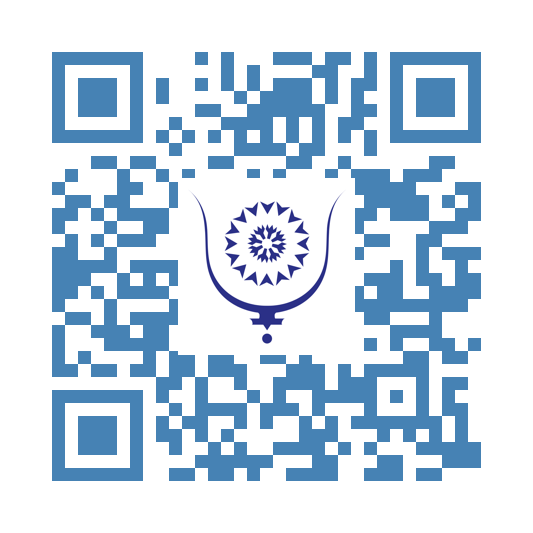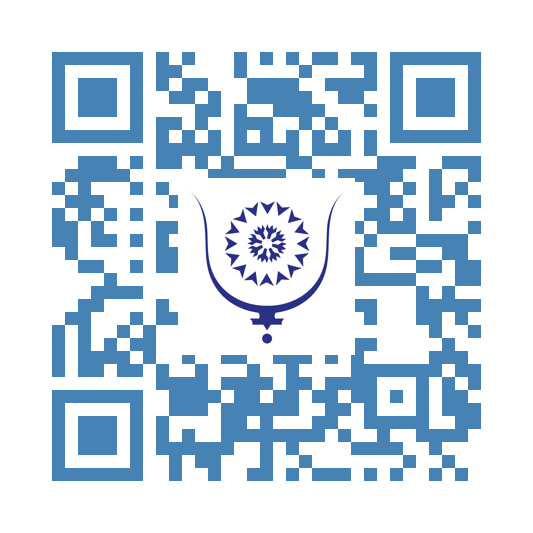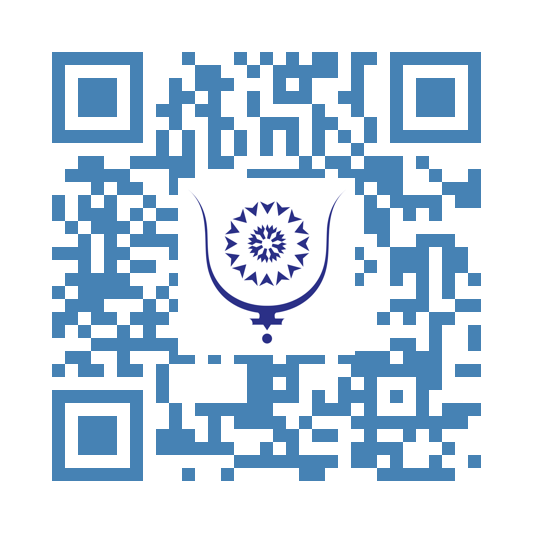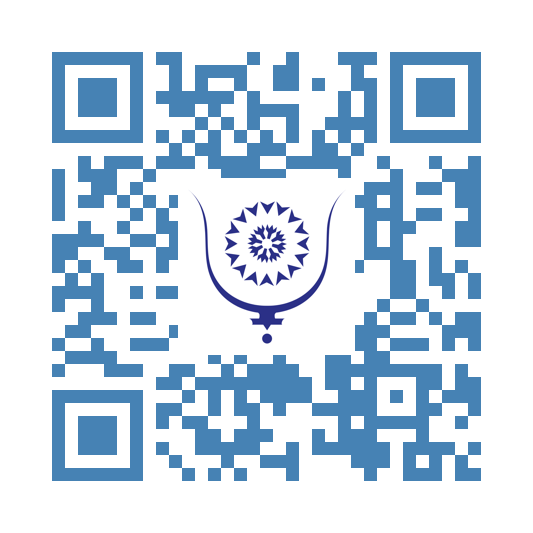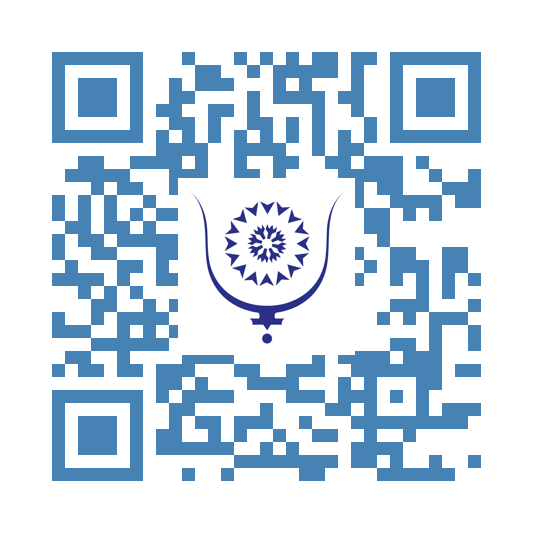Theurgy
76
Theurgy (Greek: θεουργία, theourgía, “divine work”) is the sacred art of invoking and communing with the divine through ritual acts, moral purification, and contemplative discipline. Emerging from the spiritual philosophy of late Neoplatonism, especially as formulated by Iamblichus (c. 250–325 CE), theurgy is distinguished from other forms of magic by its noble ideal - the soul’s ascension and union (ἕνωσις, henosis) with the divine source.
Unlike goetia, which seeks to manipulate material outcomes, theurgy is fundamentally initiatory and redemptive. It engages the practitioner in a disciplined ascent through the metaphysical hierarchy of existence, beginning in the sensory world and leading toward the transcendent unity of the One. This ascent is made possible through divine grace and ritual participation in the cosmic order. The theurgist operates within a universe conceived as a great chain of being (σειρά, seira), extending from the indescribable source through the divine intellect (νοῦς, nous), the soul (ψυχή, psyche), and the celestial intelligences, down to the elements of the material world. Through sacred rites, one may ascend these levels of reality by re-establishing communion between the soul and its divine archetype.
At the heart of theurgical practice lies the invocation of spiritual intelligences—gods, archangels, planetary powers, and cosmic intermediaries—through symbolic actions, sacred statements, and hieratical rituals. These acts are not merely symbolic or theatrical, but sacramental: they are performed to align human activity with the divine will and to reflect the eternal order of the cosmos within the temporal world. Iamblichus stressed that such union with the gods could not be attained through philosophical reasoning alone. Rather, one must engage in ritual action using sacred symbols, divine names, and purificatory rites to render the soul receptive to the divine presence.
The practice of theurgy was closely tied to philosophical ethics and interior purification. The theurgist was expected to live a disciplined life, cultivating virtue, moderation, and piety. This internal preparation was as crucial as the external rite, for the soul must be made capable of bearing divine illumination. Through repeated engagement with divine acts, the practitioner refines the spiritual vehicle and becomes gradually elevated to recognize the higher realities without distortion.
Historically, theurgy developed as a synthesis of Platonic metaphysics, Chaldean oracles, Egyptian temple rituals, and mystery initiations. While rooted in the classical world, its influence extended into the Middle Ages and Renaissance. Figures such as Marsilio Ficino and Giordano Bruno drew heavily on theurgical principles in their Hermetic and Neoplatonic revivals. In modern esotericism, especially within orders such as the Hermetic Order of the Golden Dawn, theurgical ideas persist under the structure of ritual magic, planetary invocations, and Qabalistic ascent.
The ultimate goal of the theurgist is apotheosis—not in the sense of personal glorification, but in the restoration of the soul to its divine pattern, beyond all individuation. As Iamblichus declares in his treatise On the Mysteries:
“Theurgy unites us to the gods, not through thought, but through divine acts.”
In this sense, theurgy is not merely a practice, but a sacred path—a divine remembrance enacted through the body, soul, and spirit, leading the practitioner not toward mastery of the world, but toward reintegration with the divine fullness (πλήρωμα, pleroma) from which all emanates.
Share:
Theurgy
copy:
https://bluwr.com/p/278216127
Morocco, History, and Geography: The Foundations of Political Reality and Territorial Integrity...
311
Politics cannot be separated from history or geography. It consists of a set of actions and decisions aimed at organizing a society internally, as well as in its relations with the rest of the world. It is always situated within a context shaped by the two fundamental dimensions of history and geography, which are by no means mere backdrops but rather provide the framework within which political projects, conflicts, and developments unfold. Politics may be influenced by an ideology—born of a philosophy—or simply shaped by a given context, but such influence rarely lasts.
History plays a fundamental role in understanding political phenomena. A country’s institutions, laws, and values are rooted in its collective memory, an inheritance made up of major events, breaks, or continuities with the past. Borders, for example, are often drawn following wars or treaties, the outcome of ancient or recent conflicts. They remain visible marks of past rivalries, defeats, victories, and compromises. Relations—whether of solidarity or rivalry—between nations, regions, or communities are explained in light of shared or divergent histories.
The present Kingdom of Morocco cannot be understood without reference to its millennial origins, to the centuries-old Sharifian Empire, nor to the successive dynasties that shaped its relationship to religion, allegiance, and the centralization of power throughout different eras.
Similarly, geography significantly influences the choices and constraints of public policies. The distribution of natural resources conditions economic development, territorial organization, and power relations. Relief, climate, and access to maritime routes determine possibilities for urbanization, agriculture, communication, and defense. Border situations impose specific diplomatic and security policies, while landlocked or insular areas require tailored strategies. Some authors even describe Morocco as an “island country” due to its geographical configuration.
It is therefore inconceivable to conceive of effective or legitimate politics without taking history and geography into account. Every choice, reform, or political ambition must be based on a deep understanding of the territory and collective memory; ignoring one or the other exposes one to illusion, misunderstanding, or even failure.
Regarding the Sahara, referred to as the “Western Sahara,” the geography of this region is undeniably contiguous to Morocco, physically, demographically, and historically: the Saharan populations have largely contributed to the country’s evolution. Its history was written through the successive allegiances of its tribes to the sultans of Morocco, and the Sharifian kingdom thus constitutes a nation-state established long before the contemporary era.
Weakened by having missed the crucial turn of the industrial revolution, the Sharifian Empire was dissected from south to north, but also from the east. The so-called Western Sahara was annexed by Spain, which exercised colonial control there from 1884 to 1975. This situation facilitated France’s domination over territories grouped into French West Africa, part of which later became Mauritania. France also appropriated the eastern part of the Sharifian Empire, annexed de facto to its departments conquered from the Ottoman Empire and called French Algeria. The remainder was placed under French protectorate, while northern Morocco came under Spanish rule.
Independence, achieved in 1956, and the gradual decolonization of Sidi Ifni and Tarfaya concerned other regions only later.
On November 28, 1960, France authorized the proclamation of Mauritania’s independence—a region then claimed by Morocco, as were territories under Spanish control that Morocco considered its own. At that time, there was a Moroccan ministry called the “Ministry of Mauritanian and Saharan Affairs,” headed by Mohammed Fal Ould Oumeir, a representative of those territories.
From 1963 onwards, the kingdom raised the issue of the Spanish Sahara before the Decolonization Commission. The situation became complicated when newly created Mauritania also claimed the territory, notably to pressure Morocco, which did not recognize Mauritanian independence until 1969—nine years after its proclamation. Morocco continued to claim the Spanish Sahara peacefully, preventing the Liberation Army from pursuing military actions in the region.
In 1973, the creation of the Polisario Front (Popular Front for the Liberation of Saguia el-Hamra and Rio de Oro) marked a new stage. This movement initially aimed to unite the Saharan territory with the “motherland.” But in a context of regional rivalries and ideological tensions, the Saharan question was instrumentalized by various actors.
Muammar Gaddafi’s Libya played a decisive role in the rise of the separatist Polisario, supporting and arming the movement in a "revolutionary" and pan-Arabist logic, while seeking to destabilize the Moroccan monarchy. Later, Gaddafi himself admitted having made a “strategic mistake” in backing this group, which remains a destabilizing factor in the region today.
In 1975, a peaceful turning point occurred: bolstered by the International Court of Justice’s opinion recognizing ties of allegiance between Saharan tribes and Moroccan sultans, the late King Hassan II launched the Green March to general surprise. This mobilization pushed Spain to withdraw from Laâyoune in favor of Morocco, which immediately reclaimed the territory. Mauritania, although having occupied adjacent zones, ultimately withdrew, leaving Morocco alone against the Polisario Front, actively supported by Algeria, which hosted, armed, financed, and elevated the movement into a “republic.”
Houari Boumédiène’s Algeria exploited the situation to weaken its Moroccan neighbor, even calling the Saharan issue a “thorn in Morocco’s side,” a way of exacting revenge for the crushing defeat in 1963.
This dispute has often overshadowed the deep history of ties between Morocco and these territories under Sharifian authority well before the colonial era. For Morocco, territorial integrity rests firmly on the constants of history and geography—major arguments. The rest is merely a temporary construction without foundation, destined to fade into oblivion in the near future.
Moroccans know this very well… Perhaps not everyone else…
Share:
Morocco, History, and Geography: The Foundations of Political Reality and Territorial Integrity...
copy:
https://bluwr.com/p/275453220
Ahmed Faras: The Eternal Legend of Moroccan Football
542
I have been fortunate enough to know Ahmed Faras. It is unbearable for me to speak of him in the past tense, someone who has been part of my life for so long. It had been ages since he last touched a ball. Few are still alive who saw him play, those who, match after match, would await his dribble, his runs down the wing, his shot, his goal.
Faras was an outstanding man, with an incredible shyness and reserve. Even when present somewhere, he was always on the sidelines: discreet, courteous, kind, with deep sensitivity, affection, and great touchiness.
But Faras will always be part of the present. He is a true legend of Moroccan and African football; legends never die.
Fedala saw him born in the cold of December 1947. Mohammedia would be his city and Chabab his eternal club. At the time, there was no such thing as a transfer market, no migrations, no football mercenary spirit. You were born in a club, learned to play there, and you stayed. His temperament was not that of a typical striker: there was no aggressiveness, no cunning. He compensated with his genius and never needed to dive or roll on the ground to sway a referee or create confusion. His genius spared him all that. He was an exceptional striker who marked the history of Moroccan and continental football. The turf at El Bachir football stadium helped him, at that time, it was the best in Morocco.
Ahmed Faras was the product of a generation shaped by the structured environment of the youth sports schools run by the Ministry of Youth and Sports, a system supposedly dismantled by so-called administrative and political reforms. Yet, it was there that Morocco's champions were formed, across all sports. His early path was marked by the guidance of renowned trainers such as Lakhmiri, who helped shape numerous Moroccan talents. This solid foundation allowed him to develop technical skills and a sense of teamwork very early on, which would become hallmarks of his play.
Ahmed Faras spent his entire career at Chabab Mohammedia, from 1965 to 1982, never having a professional contract—such things didn’t exist in Morocco then. There’s no need to mention signing bonuses or performance awards, even with the national team. His loyalty to Chabab is remarkable. He would lead the club to a Moroccan championship and become its top scorer. He would bring along with him his playing friends—Acila, Glaoua, Haddadi, and many more.
Faras was a pillar of the Moroccan national team. With 36 goals in 94 caps, what a historic scorer for the Atlas Lions! He captained the national team for eight years, playing in the 1970 World Cup in Mexico and the 1972 Munich Olympic Games.
In 1975, Ahmed Faras entered the legend by becoming the first Moroccan to win the African Ballon d’Or, an award that underlined the quality and consistency of his play. This distinction placed him among the greatest players on the continent, competing with the top African stars of his era. There was talk of a transfer to Real Madrid...but at the time Moroccan league players were barred from moving abroad under penalty of losing their place in the national team. The idea was, thus, to strengthen the domestic league...
The peak of his career was surely the 1976 Africa Cup of Nations (CAN), won by Morocco in Ethiopia. Faras was the leader on the pitch, the tournament’s top scorer, and his influence was decisive for this historic triumph—the only major African title that Morocco has ever won. He scored crucial goals against Nigeria and Egypt in that tournament, perfectly embodying the role of playmaker and team leader on the field. To this day, he remains the only Moroccan captain ever to lift the coveted African trophy.
I have been a few times to that ground in Addis Ababa where he lifted the trophy, and every time, his image dominates my thoughts. An indelible black-and-white, forever etched in the history of the Kingdom and in the memory of Moroccans who followed the match at the time through the voice of one Ahmed Elgharbi...no live broadcasts back then.
He was a respected and heeded captain, guided by great coaches: Abdelkader Lakhmiri, Blagoe Vidinic, Abdellah Settati, Jabrane, and especially Gheorghe Mardarescu during that epic campaign in the land of Emperor Haile Selassie. His charisma and vision of the game were crucial in unifying the team and leading them to the summit of African football. Faras embodied the spirit of conquest and national pride throughout the tournament. The squad was selected and led by an outstanding manager as well Colonel Mehdi Belmejdoub.
His name is forever bound to that legendary achievement, a symbol of the potential of Moroccan football when guided by exemplary leadership, committed and knowledgeable managers, and players who were true warriors for their jersey’s colors.
Ahmed Faras was not just a talented player. After his retirement, he continued to share his passion, getting involved in youth training, passing on his knowledge and love for the game to the new generation. He has been a source of inspiration for so many generations of players.
Knowing Lhaj Ahmed Faras meant knowing a symbol of loyalty, talent, and unique leadership in Moroccan sports. His name will forever remain inscribed in collective memory as that of a football giant, whose legacy goes beyond sport to inspire entire generations.
Rest in peace, my friend. One day, a great football stadium in this country will bear your name, and it will be fitting, if the players follow your example, honor your career, and if the public rises to your greatness, paying tribute to your distinguished name.
So Lhaj Ahmed Faras, if you ever meet Acila up there, ask him to give you another nice pass, and tell Glaoua to defend well...
Know that your star shines and will always shine above us in the sky of the beautiful country you cherished so much.
---
Share:
Ahmed Faras: The Eternal Legend of Moroccan Football
copy:
https://bluwr.com/p/272896781
The Monad
844
The Monad is found at the highest level of existence, being the eternal, indivisible spark of the Divine. It is not a being in the conventional sense, but a pure center of consciousness, a point of origin that transcends time, space, and form. The Monad is a direct emanation of the Absolute, the One Source, and contains within itself the total potential of divine intelligence and will. The Monad beholds the entire cosmos, reflecting it inwardly without division or movement.
For the purpose of experience, evolution, and the expansion of consciousness, the Monad unfolds itself. This process does not mean that a fragmentation occurs, but emanation, in accordance with the laws of sacred geometry and cosmic harmony. The Monad expresses itself into twelve individuated Soul aspects — each a radiant expression of its divine essence. These are sometimes called Oversouls, Higher Selves, or Solar Selves in esoteric traditions. Each of these twelve Souls remains intimately connected to the Monad, yet takes on a unique pathway of spiritual development and service.
Each Soul, in turn, extends itself into twelve Spirits, or individual incarnating identities, that manifest across the dimensions of space and time. These Spirits are what we often understand as human personalities — seemingly separate lives, yet each one is a temporary projection of a higher spiritual intelligence. These incarnations serve to gather experience, to learn through contrast and duality, and ultimately to return to unity through the path of conscious realization.
Thus, from a single Monad emerge:
1) 12 Souls (higher, eternal selves).
2) Each with 12 Spirits (incarnated personalities).
3) That results in 144 individuated expressions of the original divine spark.
This structure is an archetypal framework encoded within the very fabric of the universe. The number 144 is not coincidental: it is directly related to sacred numerology and appears in mystical scriptures such as the Book of Revelation, where the 144,000 sealed servants symbolize the perfected collective of awakened souls.
In this model, the journey of each incarnated Spirit is not isolated, but part of a vast, intricate tapestry. All experiences — joys, sorrows, triumphs, and trials — are transmitted upward through the Soul to the Monad, enriching the totality of divine being with wisdom distilled through the lens of individuality. The Monad, untouched and changeless, still gathers all of these reflections into itself in perfect harmony.
To know oneself, then, is not merely to understand one’s personal identity, but to awaken to the truth that we are emanations of a higher Soul, and beyond that, of a singular Monad — a spark of God.
Share:
The Monad
copy:
https://bluwr.com/p/264947973
New Era in World Athletics: The CAA’s Vision for Equitable International Representation...
861
At its most recent congress held on July 14, 2025, in Abeokuta, Nigeria, the Confederation of African Athletics (CAA) adopted a resolution that could upend the organization of global athletics governance. As the debate on modernity and representation within international sports institutions intensifies, the CAA is proposing major reforms for World Athletics (WA).
**At the Heart of the Reform: A Call for Fairer Governance**
Confronted with recent developments in world sports and the need to ensure transparency and efficiency, the CAA believes it is time to revise the Statutes of World Athletics, the global governing body for athletics. The main goal is to strengthen continental representation within the WA Council.
This reform hinges on the key points of the resolution, namely fair representation by continent. The CAA suggests establishing a fixed quota of representatives for each continent within the Council. Such a measure would give each region an effective voice, limiting the overrepresentation of continents already well established in international decision-making bodies. It also proposes that the election of World Athletics Council members should be conducted by the continental associations, rather than by a global general assembly. The CAA insists that each continental association should directly elect its own representatives. However, under the CAA’s proposed reform, the presidency is an exception: the position of President of World Athletics would remain subject to the traditional election by the WA General Assembly, thus preserving a form of institutional unity.
The proposal goes further by suggesting that, for all World Athletics commissions and working groups, the nomination of members should also fall under the authority of the continental associations, according to a pre-established quota set by WA regulations. This approach aims to ensure real diversity within the technical and strategic circles of global athletics.
**A New Momentum Towards International Sports Democracy**
The CAA’s initiative is part of a global movement calling for more democracy, transparency, and balance in the governance of major sports federations. Several observers believe that such a reform, if supported by other continental associations, could become a model for other sports and help create a more balanced, representative, and inclusive international sports world.
Nonetheless, the proposal will face multiple challenges in its implementation. Despite its ambitions, this resolution will have to overcome several obstacles. Naturally, it requires building consensus among other continental associations. There will also be negotiations with the World Athletics Council, which may fear a loss of influence for certain continents. Finally, regulatory texts will need to be adopted according to a timeline compatible with the desired institutional evolution.
Inspired by the spirit of Abeokuta, the CAA’s proposal could well usher in a new era for athletics. It reaffirms the legitimacy of emerging continents and raises the fundamental question of equity in international sports. Only time will tell whether this ambitious reform will find global resonance and lead to a profound transformation of World Athletics governance.
Share:
New Era in World Athletics: The CAA’s Vision for Equitable International Representation...
copy:
https://bluwr.com/p/264625748
MRE : The elephant outside the room
868
MRE : marocain résident à l'étranger. A simple acronym, rolls off the tongue nicely. Depending on your social class, a different image popped up in your mind. Let's examine different scenarios :
— The ex-NEET turned Italian: Family borrowed a year's worth of wages to send him on raft to Italy or the afterlife. Gets a new phone to everyone when he visits every couple summers. Unfortunately, it's not the 80s anymore and he's got no choice but to sell drugs if he wants to afford a Volkswagen Golf. "You can take an african out of africa, but you can't take africa out of the african". Karma will make him live long enough to see black africans invade his country like he invaded other people's. Single handedly responsible for making real estate unaffordable in towns nobody wants to live in.
— The daughter who studied in france and works in paris that your neighbor brags about: Lost her virginity in a party but her parents will never hear about it. Trades her headscarf for a CDI. Thinks she needs no man as she goes around Europe like a pokemon trainer catching selfies in cities her ancestors did not build. Claims she loves her country but only thinks about going back there if she can double her living standards. A pure product of the system, hates racism, sexism, and any globohomo-ism. Enjoys being fetishized by white bois.
— The lazy friend that won the visa lottery to the US: Thinks he's made it thanks to his skills and hardwork alone. Starts Vlogging as soon as he takes a mortgage. Too busy surviving the American collapse to ruin things back home. Will settle for a what barely qualifies as a woman according to his mother's standards for the papers.
— The red-pilled scholar of self-denial : Moved out of morocco out of sheer hatred for the country, its institutions, its culture, and its people. Tries to prematurely reincarnate by changing his name, accent, and backstory to better fit in his new home. The real life equivalent of the anime villain whose reasons make more sense than the hero, but is still in the wrong.
— The self-exiled man of inaction : Moved out of morocco mentally, not rich/special enough to move physically. Browses r/morocco. Most likely speaks english because his french sucks. Mind broken by the system despite never facing persecution (for a lack of trying to subvert it). Fuels loneliness epidemic but uses dating apps and social media. Imports problems from abroad, never comes up with solutions. Would not change anything is he was part of the 0.1%.
Having a big diaspora around the world is nothing to be proud of. Granted, morocco gets a significant amount of foreign currency from them, but this is basically a "resource curse", and not even a good one. I have yet to see anyone quantify their negative impact on the economy. Not only do they drive housing prices up since they can afford bigger mortgages, but they also sabotage the collective consciousness. The moroccan dream is to get out of morocco. As long as we treat our diaspora as gods among men, we idealize the act of running away. Why try to build things here when you can enjoy a much better life by going somewhere else? Why try to have a career here if local talent is always seen as second rate compared to foreign one? I'll always be astonished by the degree of hatred and scorn that we, as a people, have against ourselves. Sure, leaving this cesspit of a country behind is the rational choice at the individual level. Doesn't mean it's the right one.
Share:
MRE : The elephant outside the room
copy:
https://bluwr.com/p/264475656
What really is conviction?
951
If you can tell for sure that whatever you want to have in your future would really belong to you, then you actually don't have a future; you are just navigating through time.
It is important that we appreciate that the great people the world celebrates were never so certain that they will achieve the things they have. Yes, there were moments when they believed they would do great things, and then there were those singular moments when they actually realized that they were meant for great things. But never were there moments before such moments of the euphoria of the culmination of their deeds were they ever so sure of the prospects of the future.
This is therefore the human condition. The one that makes life worth living. The one whereforth springs the meanings of all purpose.
Notice the keyword here is to believe!
In every step of the way, great people tread the paths of belief. An identity, an appreciation of a life that could potentially be worth nothing, be meaningless and result in total complete waste. Yet, they walk that path anyway. They walk these paths also quietly aware of the rewards of their deeds.
To quote a book, "it is in times when we succeed, when things seem to be working in our favor, and our egos expand like a pufferfish, that we are most easily blind-sided and in danger of the greatest fall. It can be a cycle for many of us, until we learn how to break it, how to be unaffected by either success or failure, and just keep moving forward, towards our goals"
That is conviction!
"When I close my eyes, I see a thing. I did this thing. I made this thing. It is so beautiful. and powerful. and everyone loves it. everyone says this is really a great thing! everyone agrees that this is going to change their lives for the better forever. I smile because I imagined this thing, and I did it, and it was beautiful in every aspect. It did it's job just like I wanted it to and I fulfilled my purpose."
Share:
What really is conviction?
copy:
https://bluwr.com/p/262520422

